By Rick VanSickle
Sometimes a bottle of wine isn’t just a bottle of wine; it’s born of a discovery, a chance encounter by an inquisitive winemaker who sees diamonds in the rough.
Such was the case in the fall of 2020. A gorgeous vintage was unfolding with warm temperatures through the summer and fall resulting in plump ripe fruit on the vines. Peter Gamble, winemaker/consultant for the new Stonebridge Vineyards brand owned by Faik Turkmen (who also owns Lailey), was happily picking Merlot in late October in a Four-Mile Creek vineyard when something caught his eye in an adjacent property.
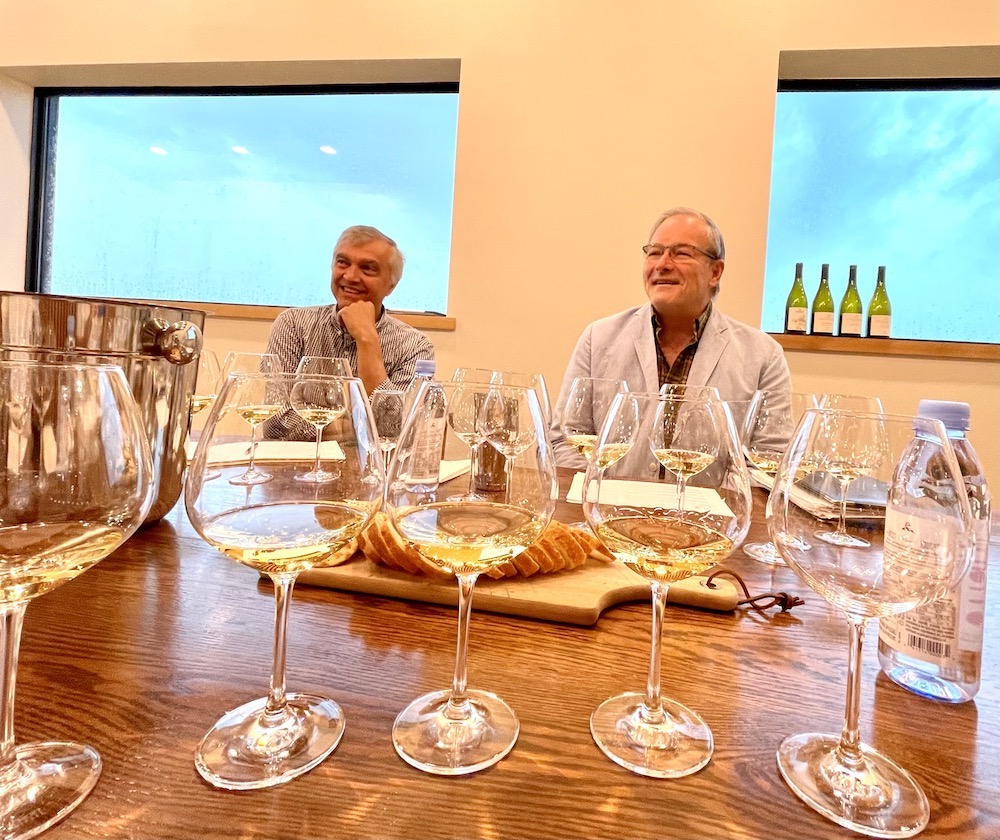
It was a block of Sauvignon Blanc, “abandoned for the year because of rot and bird damage,” explained Gamble. “I wandered in and saw that, amid a lot of grapes that were beyond hope, there was a small quantity of berries and partial bunches, fabulously ripe, some with botrytis, with spectacular and intense flavours, edging toward Sauternes on the palate but with aromatics and florality that sometimes swung wildly closer to Alsatian Pinot Gris. Wow! It seemed like a lot of the berries were turned up to 11. No way I wasn’t picking this. And Faik was completely game, so we worked out a deal with the grower and a long labour intensive, often berry-by-berry, pick began later that day.”
According to Turkmen, the grapes were from a vineyard on Airport Road in Niagara-on-the-Lake. “We were there with a small team to pick a Merlot block,” he said. The neglected Sauvignon Blanc vineyard caught Gamble’s attention and while walking the block, “we initially thought it was total loss, and the birds also had their go. After a while, Peter said that if we pick with care something unique might come out of it. We asked for permission, and (we were) told to pick what we wanted and how we wanted. We moved part of the crew and Peter worked with them throughout the pick to show them what we wanted — mostly berries, some partial clusters, until sundown.”
Turkmen said the tonnage picked and harvesting costs were brutal. “We covered the 12 acres for a total of 2,200 kg, 185 kg/acre. But we were happy from day one, the excitement the team had, I guess, justified all.”
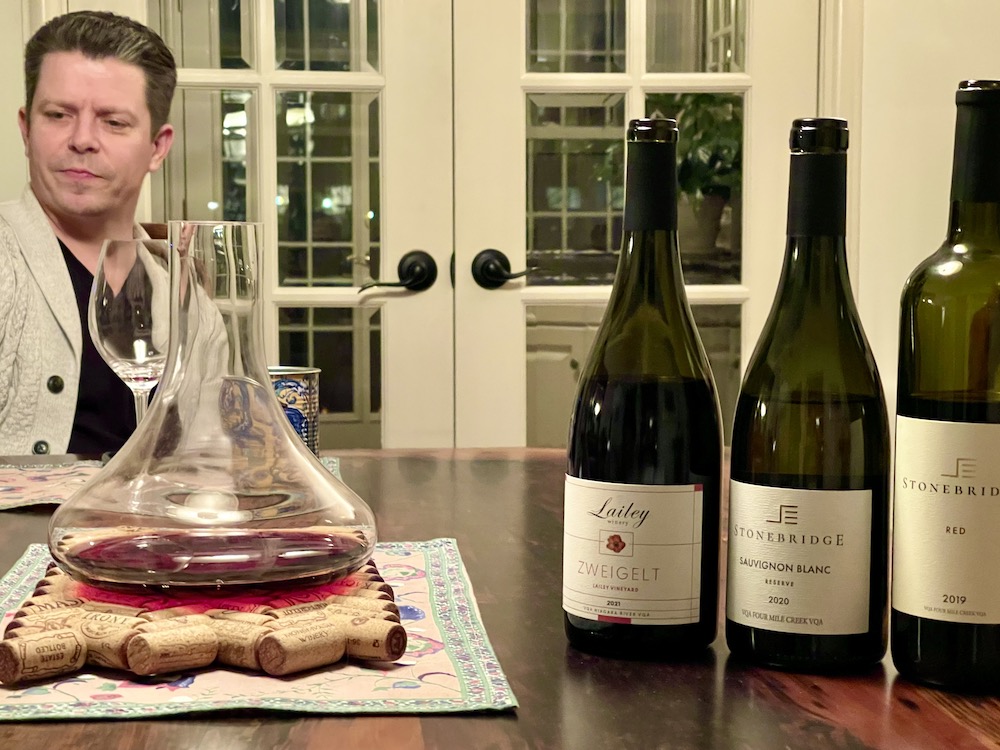
More than two years after those unicorn grapes were picked, I’m sitting at my dining room table with Lailey/Stonebridge marketing/sales manager Thomas Reid. He lives nearby and showed up with a trio of wines — two Stonebridge wines and the only red wine Lailey made in 2021 — to taste. After tasting the two reds first, Reid poured what was simply labelled Stonebridge Sauvignon Blanc Reserve 2020. It absolutely blew my mind. What in the world was this? To call it a Sauvignon Blanc is a gigantic misnomer, but technically accurate. To me it felt like it needs some grandiose proprietary name to better convey the magic in that bottle and the discovery, technique and passion that created this brilliant wine.
With cropping at a quarter of a tonne per acre, single-berry/partial-bunch picking, and some botrytised fruit, the wheels were turning in Gamble’s head.
“After further heavy sorting on the crush pad,” recalled Gamble, “we whole-cluster pressed slowly and made some assessments on the juice. The brix averaged just short of 27, acid was moderate (~7.2), and flavours were deep and complex, especially for Sauv, with a light botrytis hint. This is a really unusual profile for Niagara Sauv; and two international paradigms that immediately came to mind were Dagueneau’s Pouilly Fumé and Sancerre (both oaked, but dry) and Sauternes (also oaked, but very sweet). But that Alsatian Vendanges Tardives Pinot Gris note that I’d tasted in the grapes was still present, so a high-14s (14.8%) alcohol wine finished a bit sweet intuitively made sense.”
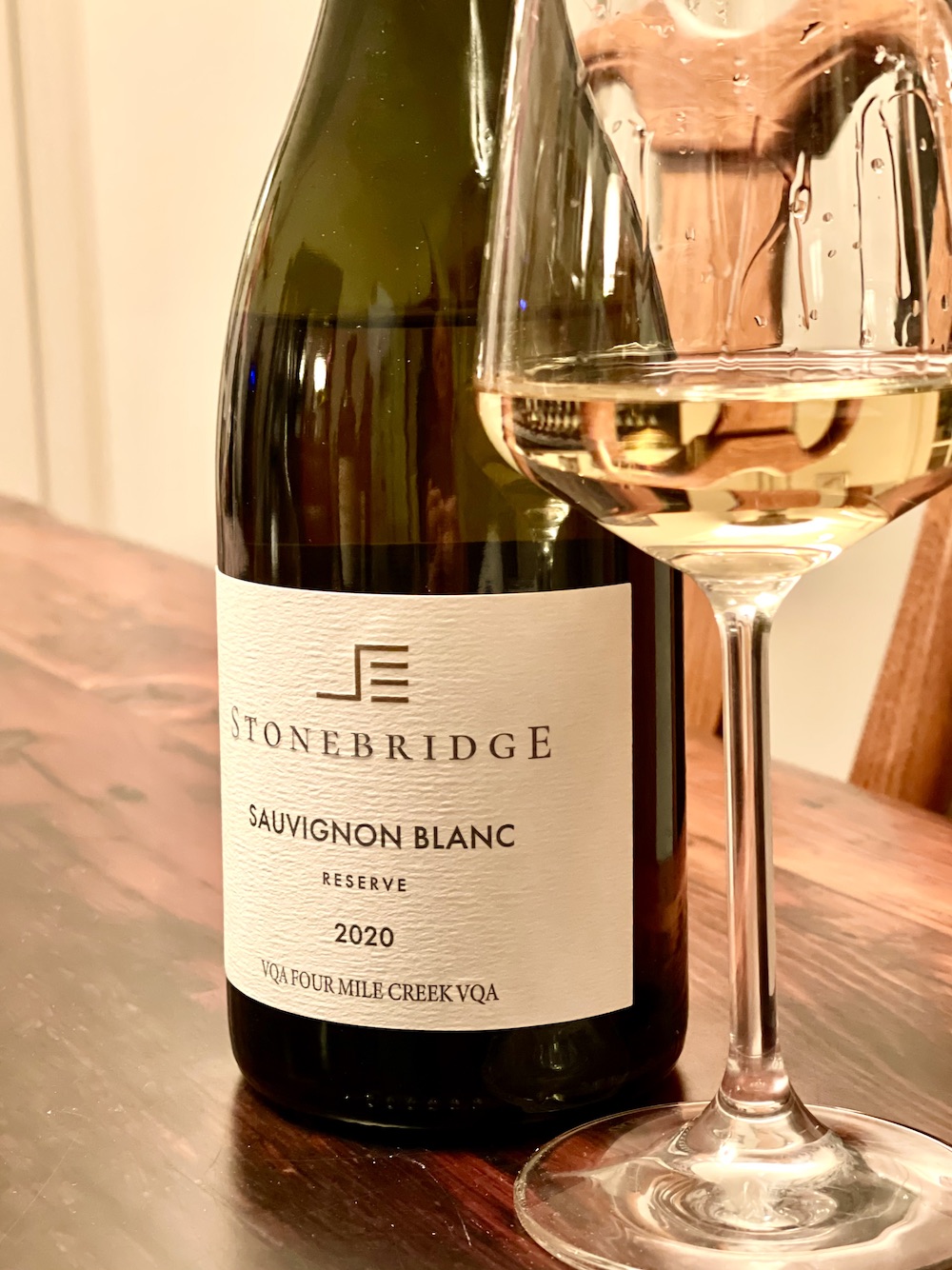
Gamble let it go into a fairly cool, wild fermentation in French oak barriques “a la Dagueneau and Sauternes,” with 50% new Rousseau barrels, but guided it toward a final structure more similar to an Alsatian Vendanges Tardives.
“It all seems a little convoluted, but you have to run with what the grapes seem to want to do, if it’s to be authentic, and bring your own wine sensibilities into play. It’s always a joy ushering a unique wine like this into reality, especially when you’re delighted with the final results, but it really is very unlikely that I’ll find Sauvignon Blanc like this again.”
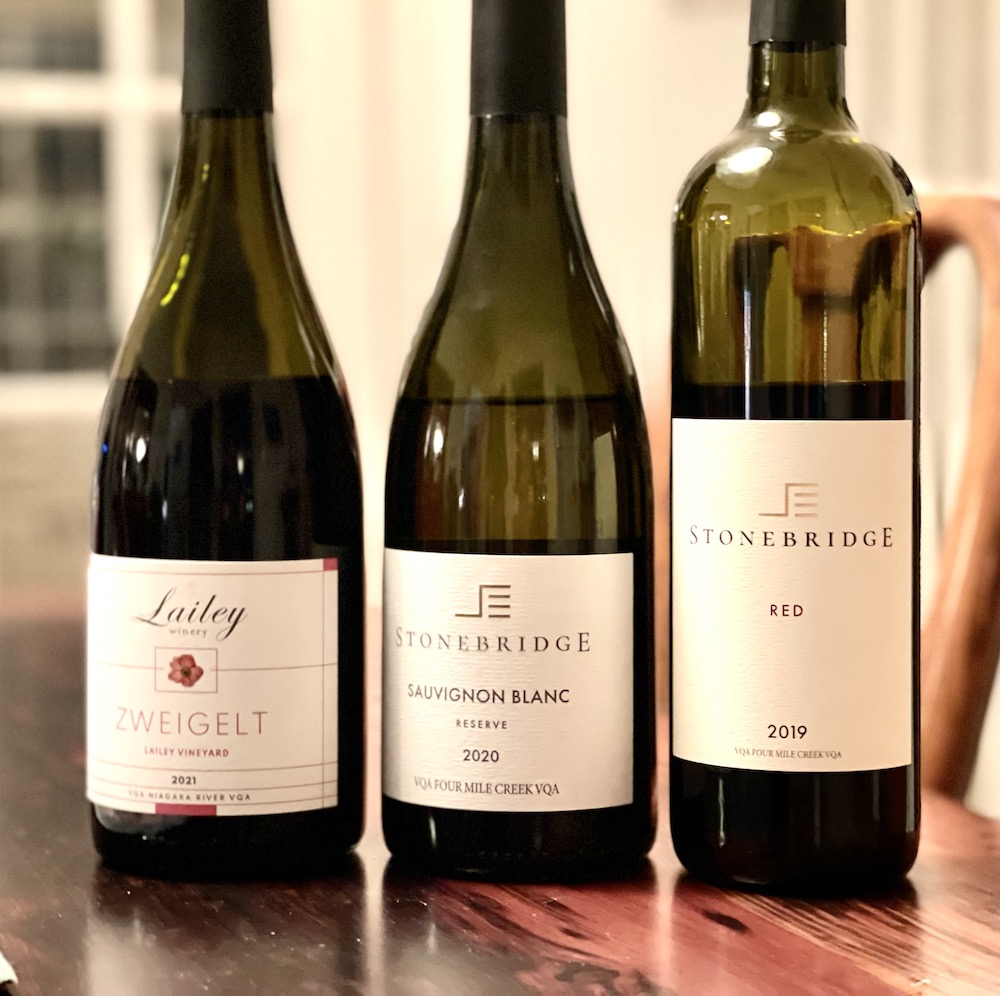
So, yes, a unicorn wine, a one-off, and priced at $78, it’s expensive, but you must consider the yields, the labour, time and oak that went into this wine. It was finished with 22 g/l of RS and spent a total of 18 months in fine French oak barrels. I promise, you just haven’t tasted a wine like this, certainly not from Niagara. Here are my thoughts on this wine and the two others tasted with Reid recently. Note, all these wines are available at the Lailey winery (Archives Wine and Spirits also carries Lailey/Stonebridge wines).

Stonebridge Vineyards Sauvignon Blanc Reserve 2020 ($78, 95 points) — As detailed above, this unique Savvy spent 18 months in barrel and was finished with 22 g/l of RS and 14.8% abv. The fruit was partially botrytised, picked at quarter of a tonne per acre and mostly single berry harvested and sorted. Only 165 cases of this wine are available, and if you are intrigued, you should order quickly. The first thing you notice on the nose of this wine is the fact that it does not resemble any Sauvignon Blanc you have ever had. It’s not grassy or herbaceous and falls more in tune with a mash-up of Sauternes (the Semillon part), Alsatian Pinot Gris, and Sancerre. It’s probably more deserving to say it has its very own profile, a unique and enthralling Niagara white wine born of discovery and creative winemaking. The first thing you notice is a lovely golden colour in the glass and then an incredibly aromatic nose of apricot tart, honeysuckle, lemon curd, baked peaches, nectarine, honeycomb, and baking spices. It is full-bodied and generous on the palate with a silky, unctuous, and creamy texture that oozes apricot, peach pie, dried stone fruits, wild honey and ginger that is rich and layered with complex flavours and moderate+ acidity holding it all together. It is an elegant, decadent, and luxurious white wine with toasty barrel oak spices and weight that hides the 14.8 abv. This will cellar nicely for 5+ years (I would personally push that beyond 5 years) and reward those with patience. But I can see how it might be too irresistible to wait on it. A blockbuster wine.
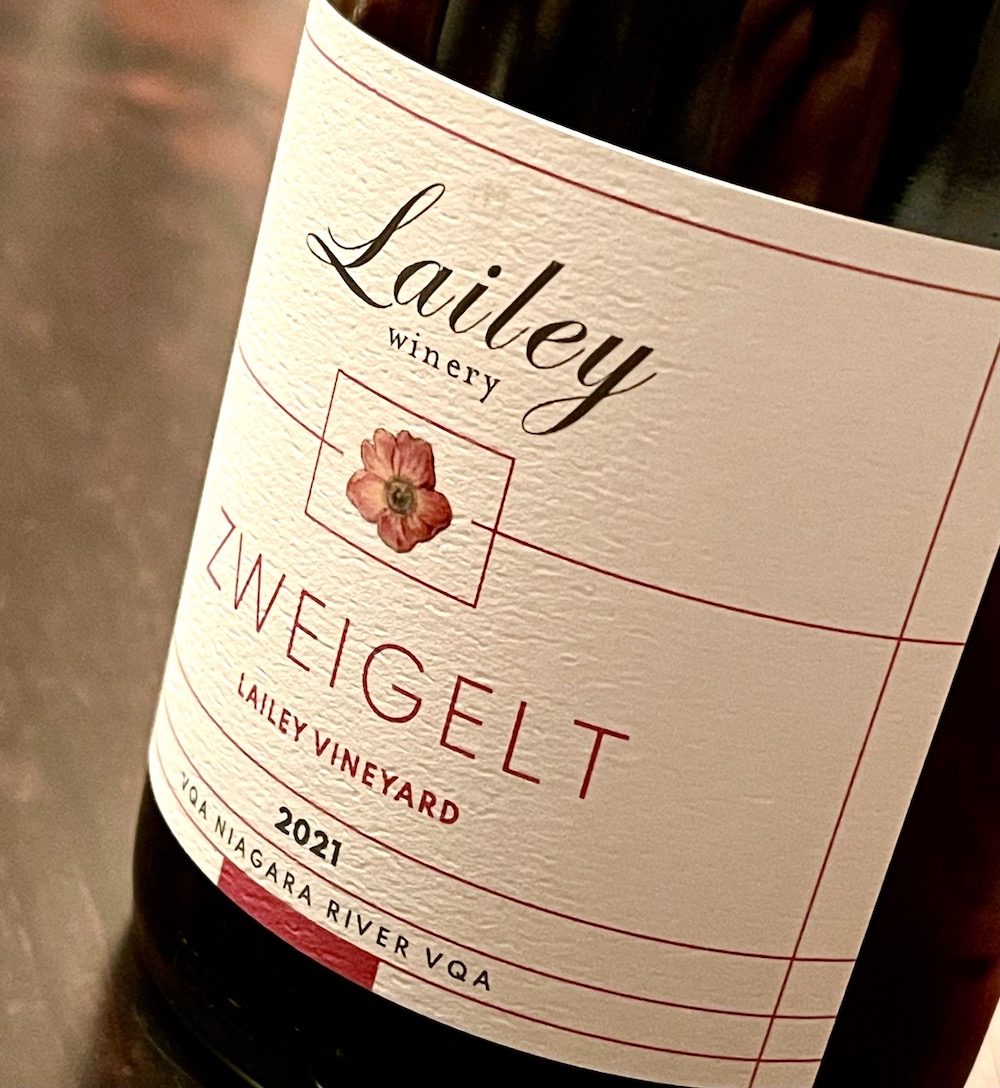
Lailey Zweigelt Lailey Vineyard 2021 ($36, 93 points) — Zweigelt is enjoying somewhat of a Renaissance in Ontario and beyond. It’s starting to click with younger wine drinkers. This is one of the best from Ontario I have tasted, and it comes from the only red wine, other than rosé or orange, made from estate Lailey grapes as the winery, that is under new ownership, continues to rebuild the historic vineyards. The Zweigelt grapes were planted by Donna and David Lailey (the original owners of the winery) and cropped at 1.5 to 2 tonnes per acre. The wine spent 11 months in French oak prior to bottling. It’s light in colour in the glass with a lovely, perfumed nose that shows wild raspberries, blueberries, cassis, savoury/earthy notes, a touch of pepper and Christmas cake spices. It’s medium bodied on the palate and smoother than other Zweigelts I’ve tried with a rich and layered profile that imparts savoury red berries, wild Muskoka blueberries, polished tannins, pepper, and integrated spice notes with a vibrant finish. Really nice wine that shows brilliantly right now but can stand a few years of cellaring.
Fun Fact: You will notice the new labels on the 2021 Lailey wines have moved back in time to reflect the original Lailey labels, which I always felt were quite classic in style and design.
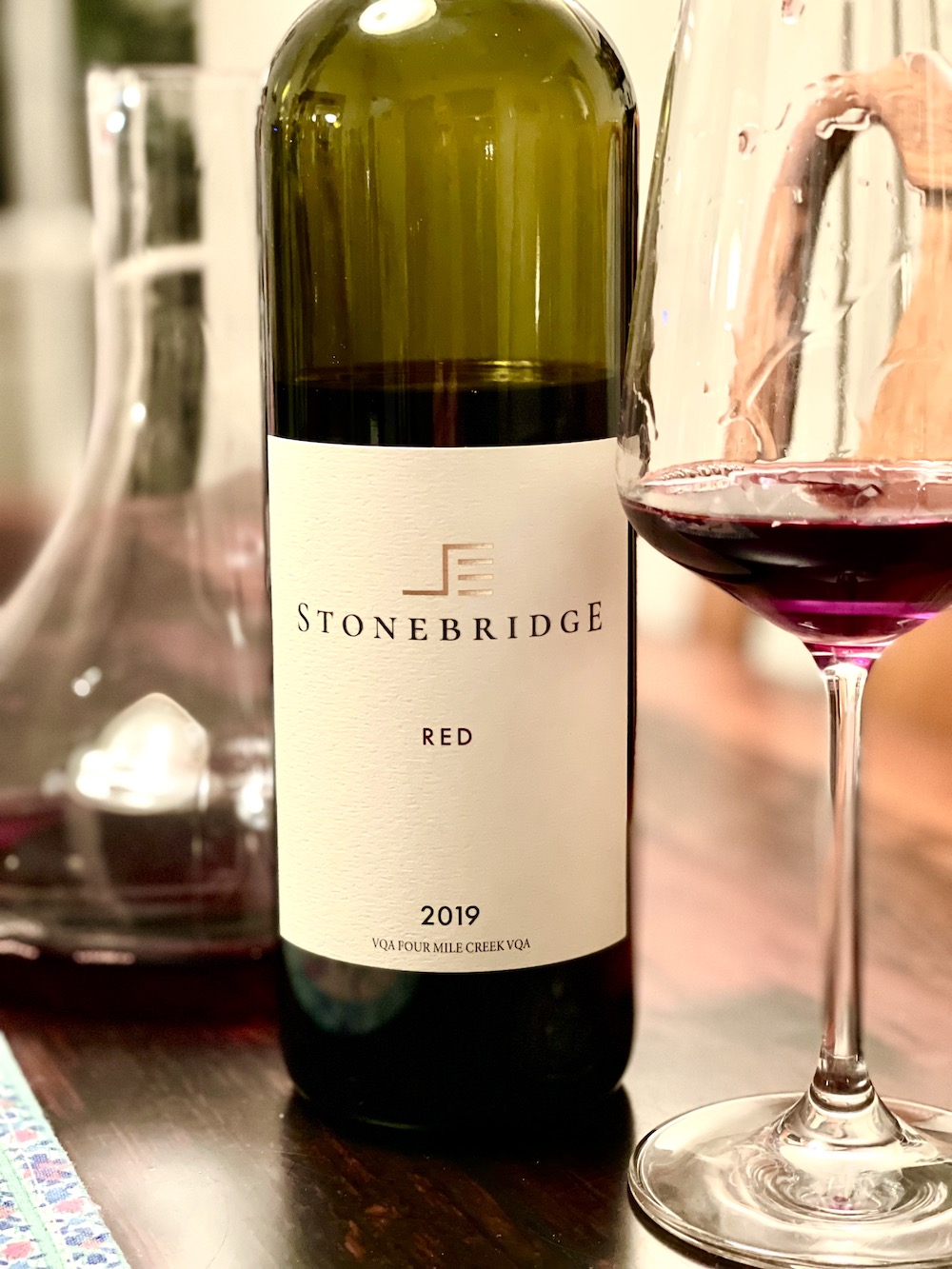
Stonebridge Vineyard Red 2019 ($42, 92 points) — The blend for this red wine is 58% Cabernet Sauvignon, 32% Cabernet Franc and 10% Merlot with oak aging in French oak barrels for 33 months, mostly used oak. All the fruit was sourced from the Four-Mile Creek sub appellation, with some estate fruit. The long, 2019 growing season challenged and extended hang-time while improving the maturity profile in the grapes. The fruit was hand harvested and hand sorted, then wild-fermented, resulting in a wine with an elegant profile on the nose, although tightly wound right now. The fruit profile is all about the fresh red berries and blackberries with subtle oak spice notes. It’s lovely on the palate with polished tannins, wild/savoury red berries, anise, blackberries, eathy/leathery notes in a complex and layered style that has length and finesse through the finish. Can cellar 7+ years and will benefit from some time in the cellar before drinking now.
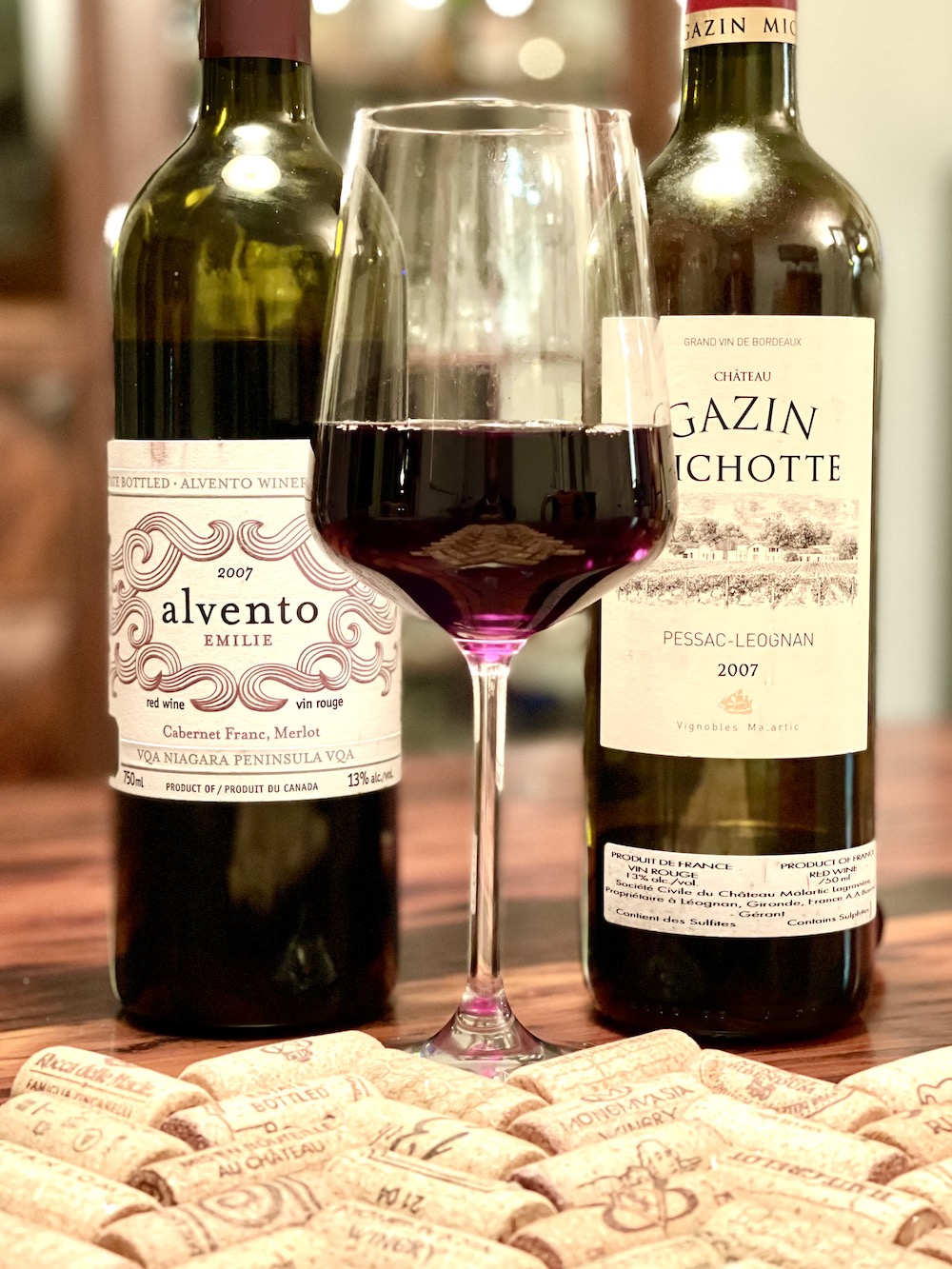
Fun Fact: Once our tasting of Lailey/Stonebridge wines was complete, I wanted to pour Reid a side-by-side of one of the old red blends Bruno Moos made before his Alvento winery was sold compared to a Pessac-Leognan Chateau Gazin Michotte (Bordeaux), both from the 2007 vintage. The Emilie was made in a St. Emilion style wine with a high percentage of Cabernet Franc while the Gazin Michotte is more of a Cabernet Sauvignon based red blend. Both the wines have held up beautifully and there were definitely comparisons to be made. I was more interested in the staying power of old Niagara reds compared to the more proven region of Bordeaux. The pair of wines were in agreement, and close in how they have evolved. The Alvento Emilie showed notes of cedar, spice, black raspberries, and oak on the nose to go with gorgeous earthy undertones. Sweet wild raspberries and cherries covered the palate in seductive waves of flavour, adding roasted coffee bean, vanilla, toasty oak tones all on a silky-smooth frame. I wish I had more Alvento wines, they were a beautiful thing under the guidance of Moos. Sadly, that was my last bottle.






Interesting to read about Lailey. Has the winery changed hands again? This was one of our favourites many years ago but was then sold to owners, if I remember correctly, from B.C. who planned on producing only ice wine. I think we finished the last of what was excellent reds from the old Lailey within the past year or so. It sounds like Lailey/Stonebridge are now producing some interesting wines. In fact, I have just ordered a few bottles of the Stonebridge 2019 ‘Red’. Guess I’ll have to wait a couple of years to try one though!
Ralph, Lailey was resold to Faik Turkmen a couple of years ago (I wrote about the new owner and some of the wines first released here: https://winesinniagara.com/2022/06/new-owner-of-coveted-lailey-winery-has-big-plans/). Lailey is back in good hands, with Faik incorporating his high-end brand Stonebridge Vineyards into Lailey. The vineyards are being rebuilt and the wines being made by Peter Gamble, one of the most respected winemakers and consultants in Canada. Great things are happening at Lailey/Stongebridge.
Thanks for mentioning the 2007 Alvento wine. I still have two bottles left – one Elige and one Sondra. I’ll have to open them up soon.